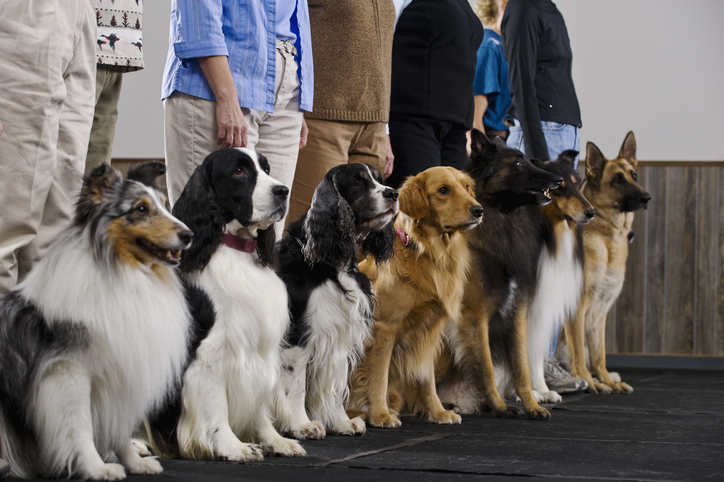Board-&-Train Dog Training in Royal Oak, MI
Intensive, Distraction-Based Training for Real-World ResultsFor many dog owners, changing behavior at home can feel overwhelming, especially with distractions, inconsistent routines, or built-up bad habits. Connected Canine Academy’s board-and-train program offers a complete reset. Designed for dogs four months and older, this immersive training experience provides daily structure, hands-on leadership, and controlled exposure to real-world challenges.
From leash pulling and reactivity to inconsistent obedience or anxiety-driven behavior, we tackle the root of the issue while building calm, reliable habits your dog can carry back home. Whether it’s barking at distractions, ignoring commands, or just general chaos, we help your dog learn to stay focused no matter what’s in their way.
This Isn’t Doggie Daycare- It’s a Behavior Bootcamp (Starting at $800/Week)
Dogs stay with us for a minimum of three weeks, with most programs lasting three to six weeks based on your goals and your dog’s unique personality. Training starts at $800 per week- and every single day is packed with purposeful structure, calm energy, and real behavior transformation. This isn’t about temporary obedience. It’s about building lasting trust, clear communication, and a dog you can actually enjoy living with.
Note: All dogs must be current on vaccinations before boarding and training can begin.

Build on the Foundation
Complete our board-and-train program, then continue with private one-on-one lessons to reinforce progress and maintain structure at home. Schedule a call to learn more!
The Paw-Sitive Effect of Calm Energy in Board-&-Train Dog Training
One of the greatest advantages of our Board & Train program is that your dog doesn’t just train with Corinne Jones—they live with her. For the entire duration of their stay, your dog becomes part of Corinne’s daily routine, receiving structure, leadership, and real-time guidance 24/7. They go on walks with her, ride in the car, experience calm downtime in the house, and learn how to navigate real-world distractions in a balanced, controlled way.
Corinne only takes a very limited number of dogs at a time, ensuring each one gets the focused, individual attention they need to make lasting progress. This isn’t a kennel environment or a revolving-door facility—it’s a home-based experience where your dog is treated like one of her own, guided through every moment with calm energy and consistent expectations.
Because your dog is constantly around someone who understands behavior at every level, they begin to mirror that steady leadership. Instead of reacting, they learn to regulate. Instead of tuning out, they learn to check in. This kind of full-immersion environment helps your dog break old habits, internalize new ones, and return home ready to follow your lead with confidence.
What Your Dog Will Learn
In our dog obedience training program, your dog will focus on distraction-based training to stay calm and responsive in any real-world situation. We teach essential skills while helping your dog remain focused despite the environment around them. Here’s what your dog will learn:

What Types of Dogs Benefit Most From Our Board & Train Program
Our board-and-train program is built for dogs who need consistent structure, calm leadership, and real-world accountability. This immersive experience is ideal for dogs who are easily distracted, reactive on leash, overly excitable around people or other dogs, or just don’t seem to listen, no matter how many times you repeat yourself.
If your dog is struggling with leash pulling, barking, jumping, bolting out the door, or ignoring commands in high-distraction environments, board-and-train gives them the space to reset and learn new behaviors in a calm, controlled setting. It’s also a great fit for dogs who are strong-willed, anxious, or stuck in bad habits developed over time.
This program is for the owner who wants real, lasting results but doesn’t have the time, experience, or environment to enforce structure every day. We build the foundation while your dog is with us, then show you how to maintain it once they’re home.
Note: Dogs must be at least four months old and fully up to date on all vaccinations before beginning the program.
